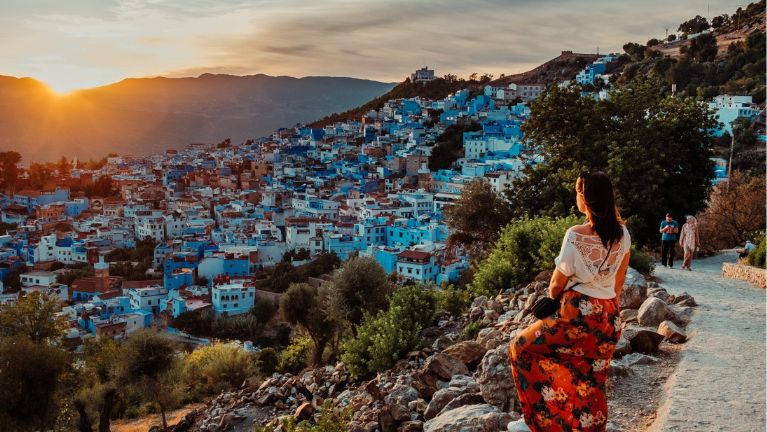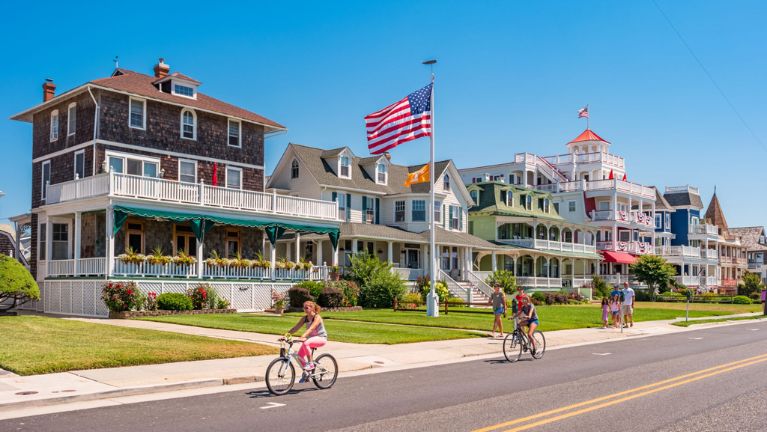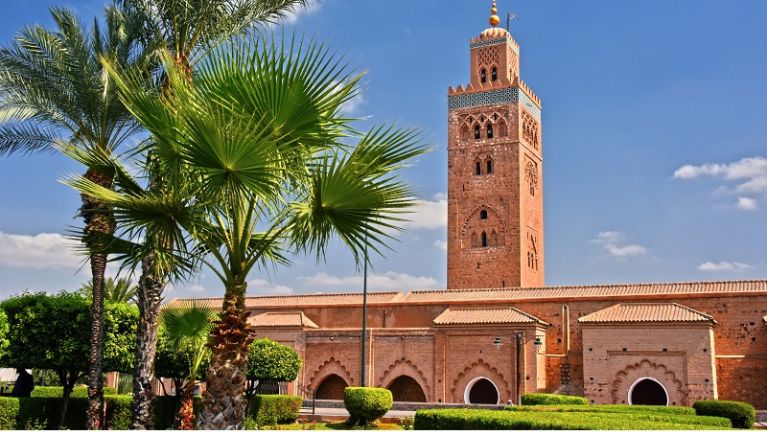The best time to visit Morocco is during fall September to November and early spring March-April. With the pleasant weather, you won’t have to deal with the bitter cold or burning heat.
Morocco is a unique destination no matter the time of year.
Morocco is a country with astonishing diversity and a side door to Africa. There are rugged mountain ranges, sprawling deserts, historic cities, secluded beaches, and kind people everywhere. Given the country’s diverse terrain, it’s wise to plan your trip to Morocco around where you’ll be going and when you’ll be going.
Here’s a month-wise guide for the best time to travel in Morocco –
- Visit Throughout the Summer for Pleasant Weather (March, April, May, September and October)
- Choose Shoulder Season for More Sedate Adventures (November, December, January and February)
- During The off-season, Visit the Coast (June, July and August)
- Thousands of People Swarm Marrakech in January
- February Has Generally Unfavorable Weather
- In March, Morocco Starts to Bloom
- Expect Surge in Hotel Rates in April and Other Activities
- It’s an Open Season for Hikers in May
- In June, Attend a Music Festival
- Look for Alternatives to Stay Cool in July
- Visit the Southern Atlantic Beaches of Morocco in August
- In September, International Tourism Resumes
- In October, the Middle Atlas Mountains Experience Rain
- In November, Prep up for the Outdoors
- December is Perfect for Skiing
Visit Throughout the Summer for Pleasant Weather (March, April, May, September and October)
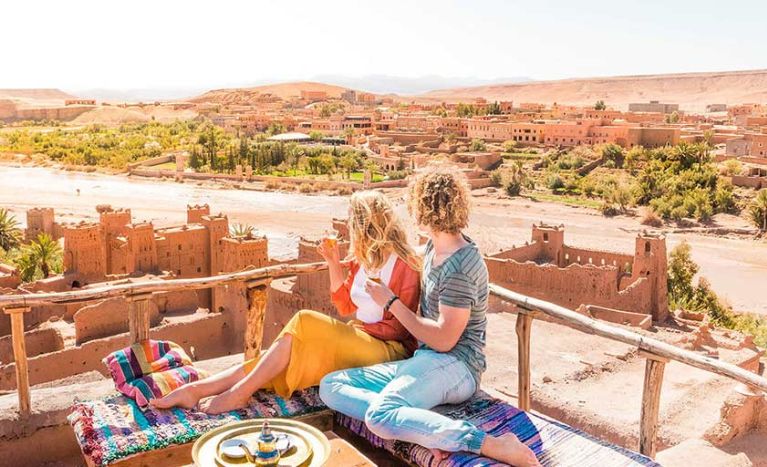
Morocco is most frequently visited in the spring and fall because of the nice weather throughout much of the nation. Saharan storms in the springtime are possible, nevertheless, as are prolonged downpours in the north. Around Easter, when European families travel to Morocco for a long weekend of warmth, footfall and accommodation costs increase.
Choose Shoulder Season for More Sedate Adventures (November, December, January and February)
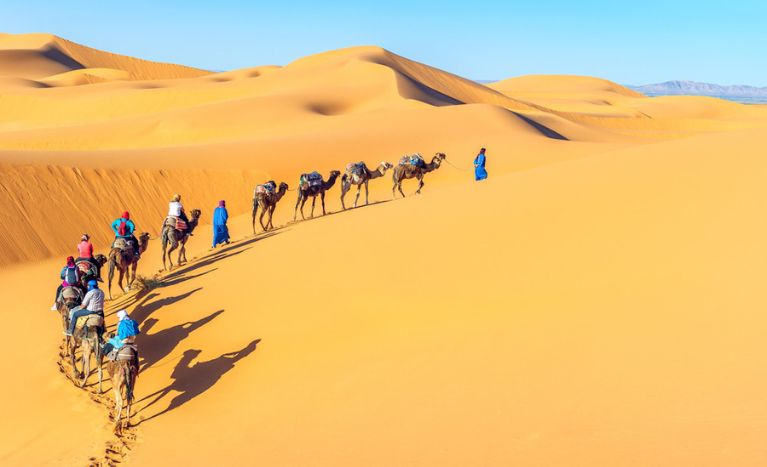
A fantastic time to visit the Sahara Desert is during the milder winter months. Christmas and New Year’s are popular in Marrakesh and the south, but it can get chilly and damp up north. Mountain roads may become treacherous with snowfall.
During The off-season, Visit the Coast (June, July and August)
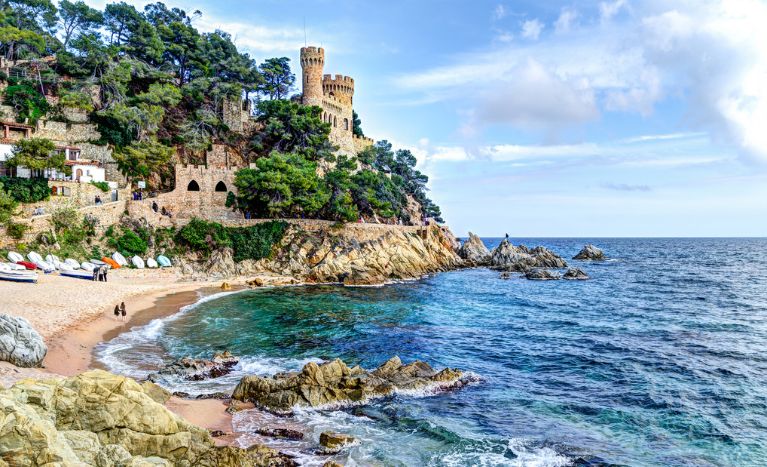
Although inland towns heat up in the summer, hotel rates on the Atlantic and Mediterranean coasts peak in July and August due to domestic tourism.
Here’s a month-by month breakdown for best time of year to visit Morocco –
Thousands of People Swarm Marrakech in January
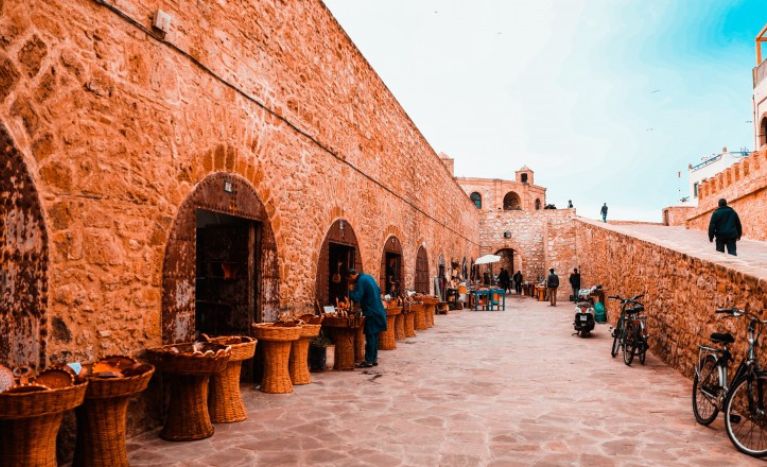
The January Morocco weather is at its most severe in January. It was too cold to handle. Because of the rain and snow in the north, several mountains are inaccessible to drivers as well as hikers. Most tourists travel to Marrakesh and the south, especially around the New Year.
An excellent time to go if you want to avoid crowds and watch Moroccans living their daily lives more genuinely than you would in the summer. However, there is a risk of rain which is fantastic for wildflowers. Right now, is the best time to go to Morocco as the desert is the ideal place to come, although it gets really chilly at night.
What to do – A nice time to walk in the High Atlas Highlands or explore the Sahara Desert because of the comparatively cool temperature in January. A safer option is desert trekking.
In locations like Fes and Marrakech, which can become overrun with tourists during the high season, January is a pleasant time to go exploring. It’s also the ideal time to get out your camera because winter in Morocco offers the clearest, dust-free air, making for ideal photographic conditions.
Key events – Amazigh New Year, The Proclamation of Independence
February Has Generally Unfavorable Weather
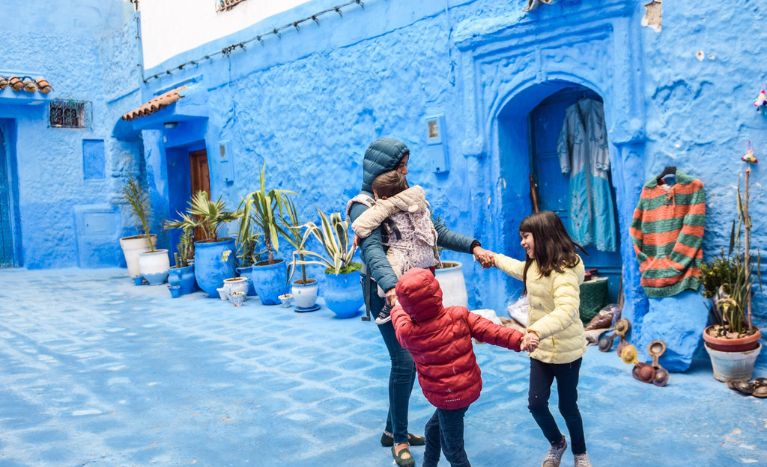
In Morocco, winter has not ended. The weather for Morocco in February is often nasty, but it’s tolerable in drier, sunnier places like Marrakech and Agadir. Few visitors, excluding overlanders and city-breakers, are seen.
Days in Marrakech are bright, with highs about 70°F and lows in the lower 50s. In Tangier, where highs are in the low 60 and most days are gray, it is colder and cloudier in the north. Although the Atlas Mountains can have highs in the 60s, the nighttime lows are substantially lower. Although February isn’t as rainy as January, you’ll probably experience one or two rainy days while you’re there.
However, the weather is more comfortable in southern sections of Morocco.
What to do – The desert, which may be extremely scorching in the summer, is fantastic to explore in February. Take advantage of the bright days and lower temperatures to go hiking, camel riding, or on an ATV excursion. Given that the air is usually clear and dust-free at this time, it is perfect for capturing images.
Spend time in the cities or unwind at the beach if it’s still warm enough to do so. February is one of the best months to visit Morocco to hire a private tour and take your time exploring Fes.
Skiing is an alternative. Travel to Oukaimeden, which is 50 miles south of Marrakech in the High Atlas Mountains, is home to a basic winter sports facility with a limited number of downhill slopes.
Key events – Almond Blossom Festival and 1-54 Contemporary African Art Fair
In March, Morocco Starts to Bloom
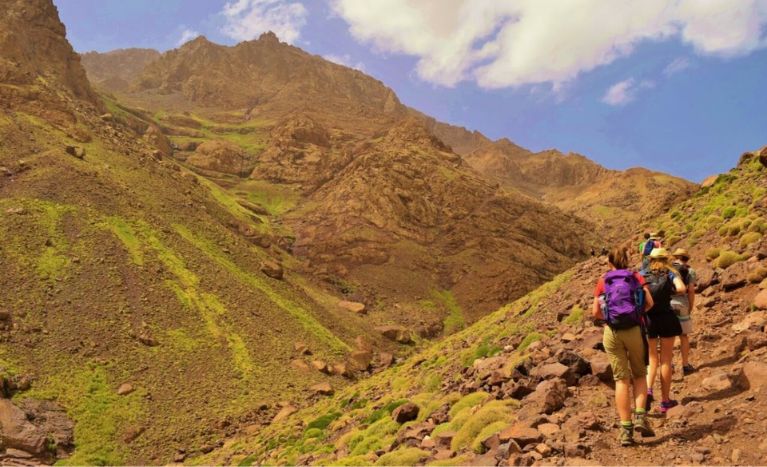
When the mountains melt and wildflowers, almonds, and cherry trees flourish in the early spring, Morocco awakens. Winds continue to agitate the desert and Souss Valley through April.
In Morocco, spring comes early. In March, the mild winter gives way to the warmer months. Positive aspects include comfortable weather. The average temperature in Marrakech is around mid-60s, with highs in the low 70s, while it’s a little cooler in northern cities like Fez and Tangier. Rainfall is a drawback. You should bring an umbrella because the weather in Morocco in March is one of the wettest months of the year in Morocco, with the exception of the seashore.
The rain, however, gives Morocco’s scenery a vibrancy. You’ll notice vivid green virtually everywhere you go, particularly in the second half of the month and into April.
What to do – Make sure to pack warm clothing so that you will be comfortable around the campfire if you decide to camp out in the Sahara. Here you can also take a camel ride at dusk.
Or consider going on a hiking trip in the High Atlas Mountains or the Rif Mountains.
It’s the best time to travel to Morocco to venture off the main road and discover some of Morocco’s lesser-known trails and Berber communities. You must have the proper tool kit as you might even see snow at higher elevations.
March is also a wonderful month for cultural tourism in the northern imperial cities because there aren’t as many tourists around and there aren’t as many people at the major attractions.
Key events – International Nomads Festival. Almond Blossom Festival, Marathon des Sables, start of Ramadan in 2023 and Marrakech Biennale.
Expect Surge in Hotel Rates in April and Other Activities
The country is still awash in greenery and it is consistently warm nationwide as spring continues. The number of visitors is large, especially around Easter when prices skyrocket.
Morocco has a lovely springtime in April. The Atlas Mountains’ highest peaks are still covered in snow, but as spring progresses, you’ll come across lush woods and fields bursting with wildflowers. The Atlas Mountains are cooler (and therefore perfect for hiking) than Marrakech, where daytime average temperatures are in the 60s. Pack appropriately and keep in mind that evenings can be significantly chillier.

What to do – Almost every activity here is great thanks to the pleasant weather in Morocco in April. If you want to experience culture, stay in the cities, or go to Merzouga, which makes a great base for a desert trip.
Consider taking a day trip from Marrakech to the Atlas Mountains for a peaceful stroll through Berber communities. Here you’ll experience some of Morocco’s natural scenery without leaving the comforts of civilization.
Explore one of Morocco’s coastlines instead. In April, the Mediterranean and Atlantic coasts both feature nice weather, and comfortable breezes. There is a thinner crowd this time of the year and is the best time to visit Morocco.
Key events – Casamémoire Heritage Days, Marathon des Sables, Jidar Street Art Festival, Sufi Music and Cultural Festival, International World Music Festival of Merzouga, and Printemps Musical des Alizés
It’s an Open Season for Hikers in May
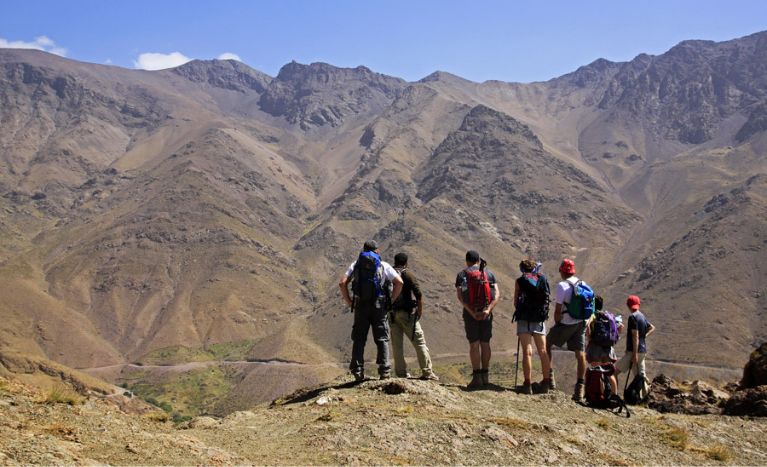
While the tourist season begins to slow down, prices in hotels and marketplaces fall. However, the worst of the summer’s heat is yet to arrive. Marrakesh experiences daily highs of about 82°F (28°C). In the Moroccan mountains, May is a fantastic month for trekking.
The weather in Morocco in May experiences spring in its prime. And in the southern regions of Morocco, the weather will start to seem more like summer. This is great for going to the beach, but not so great for sightseeing in a city like Marrakech. The cities experience large crowds when the highs can reach the upper 80s and is not the best time to visit Morocco.
In general, May in Morocco is warm, dry, breezy, and has lovely evenings. Mountain foliage is a vivid green following spring showers in March and April, making outdoor activities more alluring. An agreeable 72° Fahrenheit is the typical May temperature in the Atlas Mountains. The average temperature of Tangier, which lies on the northern shore, is lower at 63°.
Take note that communities and cities near the desert may experience sandstorms in the spring. If you find yourself in one, wrap a scarf around your face and find a safe place until the dust settles.
What to do – At the end of spring, fit in a desert tour that includes a camel ride and desert camping. Don’t forget to pack sunblock and lots of water.
Don’t miss the Valley of Roses harvest. The area hosts a significant event this month that will draw a lot of visitors. The area is peaceful and aromatic in the spring.
Think about escaping the congested cities and traveling to the seashore, the Atlas Mountains, or the Rif Mountains. May is a busy month in Morocco, although the imperial cities’ historic centers always have the highest number of visitors.
If you do intend to sightsee in a well-known location like Fes, get an early start and think about taking a side trip to less well-known locations like Volubilis or Meknes. Here you’ll encounter a little less tourism and get to enjoy some fresh air and wide-open spaces along the journey.
Key events – Festival of Roses, Rhythms of World Concert, and Honey Festival.
In June, Attend a Music Festival
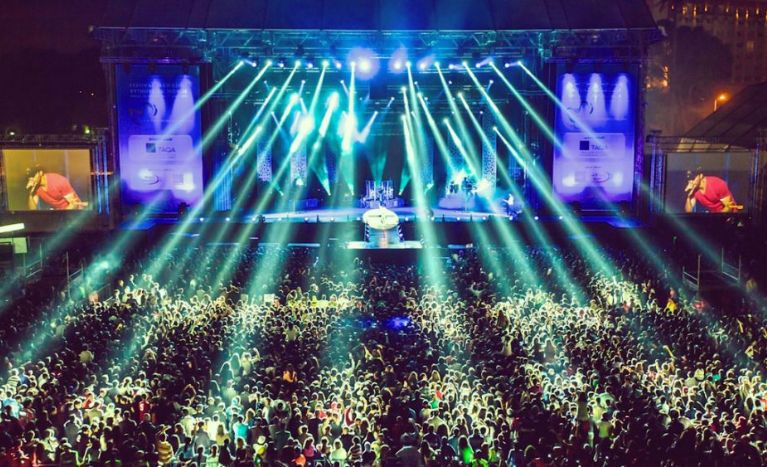
Despite the fact that the High Atlas Mountains’ peaks are still covered with snow, summer is heating up swiftly. The coast and northern Morocco are great locations to visit, and there are numerous music events there.
Morocco’s weather in June begins to grow hot. In Marrakech, where heat stroke can be a problem for tourists, highs rise even higher into the mid-90s Fahrenheit range.
In the desert, highs surge much higher. The temperature is lower in the Atlas Mountains, where the average temperature is 78°, along the seaside, where ocean breezes cool things up, and in northern cities like Fes, where lows are in the 70s and highs are in the mid-80s.
In Tangier on the northern shore, the average temperature touches around 69°.
On the plus side, June is the start of the dry season in Morocco. Rain is not a concern, but dehydration can be, so make sure you keep hydrated.
What to do – Avoid the Sahara in the summer since it is too hot to handle. Rather, go on a climb in the mountains or catch a wave at the beach.
Due to the heat and the crowds, sightseeing in places like Fes can be a bit of a hassle.
However, the temperatures are rather pleasant when compared to how hot it can get in July and August.
If you wish to explore the area or Marrakech, do so first thing in the morning before leaving the city for a more sedate and comfortable journey through the highlands or along the coast.
The beginning of summer is the best time of the year to go to Morocco to attend a concert or music festival with a local audience.
Key events – World Music Festival, Eid Al Adha in 2023, Cherry Festival, Festival Mawazine, and Fes Festival of World Sacred Music.
Look for Alternatives to Stay Cool in July
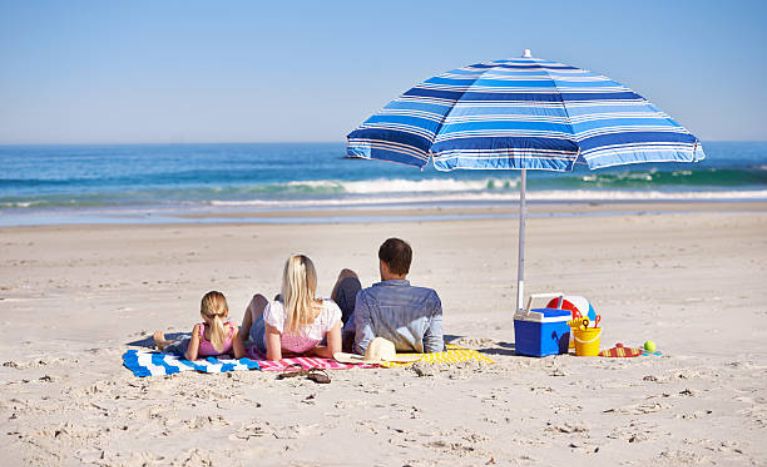
The High Atlas experiences snowmelt and average temperatures of 86°F. In the north, the beaches are crowded with both domestic and European visitors.
Long and hot days characterize Morocco’s weather in July. Peak temperatures in Marrakech reach over 100°F. The Atlas Mountains have eleven hours of daylight and an average daily temperature of 84°F.
The average daily temperature of Tangier, on the northern shore, is much more agreeable at 75°F. The beach has colder temps as well.
For instance, the daily average in Essaouira is typically in the mid- to upper 70s. Generally speaking, it’s drier in the north at this time of year. You can experience a rainy day or thunderstorms while visiting a city like Marrakech.
What to do – Trek through the highlands, unwind on the seaside under a beach umbrella, or visit a city in northern Morocco. Prepare for the heat and the crowds. There are plenty of things to do in Marrakech. Visitors prefer to spend more time indoors at the museum and the malls.
When to visit Morocco to experience culture and festivities? Be aware that July has a full cultural schedule. It’s a great time to attend a festival celebrating art or music with Moroccans, or to celebrate a significant national holiday with a welcoming local population.
Key events – Feast of the throne, National Festival of Popular Arts, Festival of Alegria, International Cultural Festival, Asilah Festival, Timitar Music Festival, and Jazzablanca
Visit the Southern Atlantic Beaches of Morocco in August
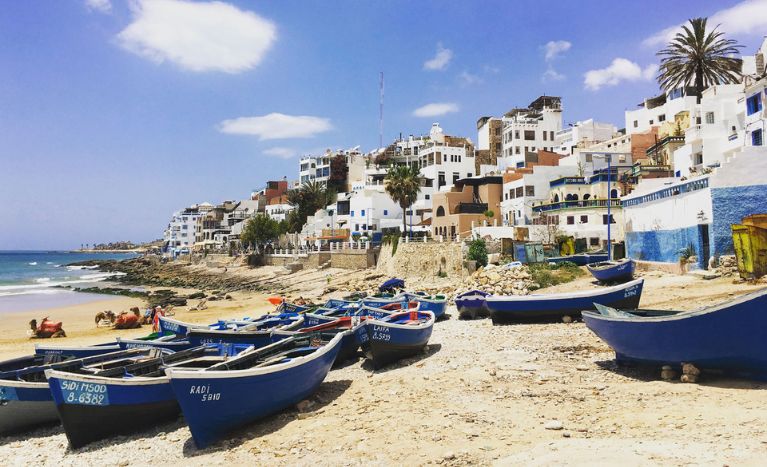
In Marrakesh, the temperature in August averages 104°F (40°C), and it can easily rise above that in the interior. To beat the heat and avoid the throng, head to the southern Atlantic beaches.
Is Morocco too hot in August? There’s no getting around it: Morocco becomes really scorching in August. Highs in Marrakech are dry and bright and surpass 100°F, and the Sahara gets considerably hotter—too hot to venture to. The daily average temperature of the Atlas Mountains is 84°, which is also fairly warm.
Temperatures are cooler at the beach. Daily highs in Agadir only reach 80 degrees. Tangier’s weather in the north of the country often ranges in the low 80s, while Chefchaouen’s daily average temperature is a wonderfully pleasant at 79°.
What to do – Whether you select the Atlantic or Mediterranean coastlines, the Alps, or both, schedule activities at the mountains or on the sea. When trekking in the High Atlas Mountains, you can hike through the limestone river gorges of Todra Gorge. Alongside, you can swim in either the Todra River or the Dades River.
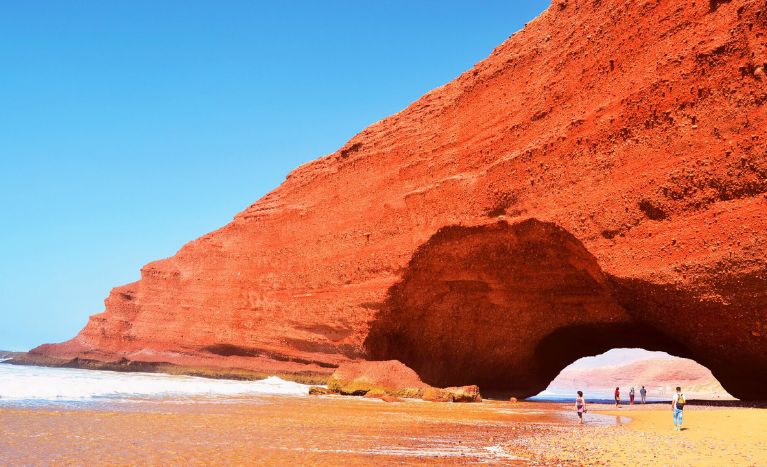
If you do spend time in towns like Marrakech or Fes while on your journey, learn from the natives and organize your day according to the weather. When the sun is blazing down on the city and the warmth is rising, get an early start, consume lots of water, and enjoy the laid-back vibes. You can venture outside as the sun sets and explore.
Key events – Setti Fatma Moussem, Moussem Moulay Abdellah Amghar, Imilchil Marriage Festival, and Moulay Idriss Moussem
In September, International Tourism Resumes
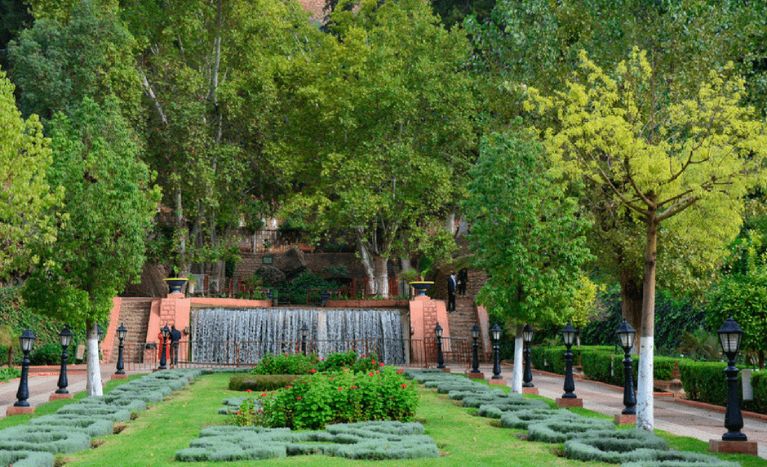
Morocco is once more a popular destination for foreign tourists as fall arrives. Even the desert, with the aroma of dates and mild breezes, is nice when the beaches are free of local tourists.
Morocco’s weather in September can be extremely hot or rather comfortable, depending on where you go. The average daily temperature in Marrakech is 80°F, which is cool enough for sightseeing but still too hot for outdoor activities in the surrounding Sahara Desert.
Even further inland, it can get oppressively hot, although now is an excellent time to visit the mountains or the seaside. The average daily temperature in Agadir, a beach city, is a comfortable 74°F, and there is a lot of sunshine. The daily average temperature of the Atlas Mountains is 77°F, but highs can reach 90°F.
Tangier’s average high temperature in the north is 81°, and Casablanca is much more comfortable, with an usual high of 78.
Also Read: Soak into the Tangier’s Charm in Morocco
What to do – Numerous festivals and unique celebrations take place all around Morocco in September. Planning a side trip to a once-in-a-lifetime event, such as the Imilchil Marriage Festival, is a terrific chance to get off the beaten road. It is where you encounter some traditional Moroccan cultural practices that most visitors skip over.
It’s also a terrific time of year for outdoor pursuits that involve both swimming and trekking.
Oceans, rivers, and lakes have all warmed up after a scorching summer, making them cool places to rinse off after a lengthy trip.
Consider going on a hike through the Todra Gorge in the High Atlas Mountains, and then dip your feet in the Todra River to cool off.
Key events – Oasis Festival, Imilchil Marriage Festival, Tanjazz Festival, and L’Boulevard Festival of Casablanca.
In October, the Middle Atlas Mountains Experience Rain

Although rain is starting to arrive north of the Middle Atlas mountain range, October is still a popular and the best month to visit Morocco.
It’s the fall in Morocco, unquestionably one of the best times to travel there. Expect a high of 82°F and lows around 60° in Marrakech after several months of oppressively hot weather. The adjacent Sahara Desert has a similar range.
The average temperature of the Atlas Mountains is roughly 71°F. In Fes or Casablanca, where the daily average temperature is roughly 66°, you should pack a jacket.
No matter where you go, bring an umbrella(and especially if northern Morocco is on your agenda. The weather in Morocco in October witnesses the end of the dry season and there is always a chance of a rainy day.
What to do – October is a harvest month in Morocco. Apples are the predominant crop in the High Atlas and Middle Atlas Mountains.
In Zagora, Errachidia, and Erfoud, the harvest begins in October and lasts until late November. It’s a great time to organize a hike or excursion around the local areas because you’ll get to see the harvest ceremonies and, of course, taste the fruit.
Is October a good time to visit Morocco? As a result of the mild climate, this is a fantastic time to climb Mount Toubkal, which is the tallest mountain in North Africa.
There are also excellent choices for shorter climbs in the Middle Atlas Mountains; take into account visiting Todra Gorge, Dades Gorge, and Ouarzazate.
Surfing is a popular sport on the coasts. For windsurfers, the city of Dakhla is a fantastic alternative.
Key events – Taragalte Festival, Erfoud Date Festival, and MOGA Electronic Music Festival.
In November, Prep up for the Outdoors
In November, more tourists visit the desert or go hiking around in Marrakesh and further south. Observers partake in birdwatching which is the true value of money this time of the year.
Morocco’s weather in November is full of chill, fewer daylight hours, and sporadic downpours.
With highs in the low 70s and an average daily temperature of 62°F in the Atlas Mountains, November is the perfect month for hiking. On the Atlantic coast, Essaouira experiences temperatures in the 60s, making it pleasant for outdoor activities.
Temperatures in Fes typically in the 60s, while the nighttime lows can be significantly lower. Nine days out of the month are predicted to see precipitation, making it a fairly soggy time of year.
With an average daily temperature of 63°, November often brings a few rainy days to Marrakech. Be mindful that flash floods can be an issue in some areas of Morocco.
What to do – Plan a journey or hike across the Atlas Mountains, go to the Sahara Desert for a camel ride at dusk, an ATV tour of the sand dunes, and stargazing.
Despite the fact that November tends to bring more rain than usual to Fes, the weather and low tourist numbers allow you to visit the major attractions rather than battle crowds. Despite being almost unbearably hot for much of the year, November is a pleasant and welcoming time to visit Marrakech.
No matter where you are in the sovereign country, November is also the best time to go to Morocco to celebrate its Independence Day.
Key events – Visa for Music, Festival du Safran, and Moroccan Independence Day.
December is Perfect for Skiing
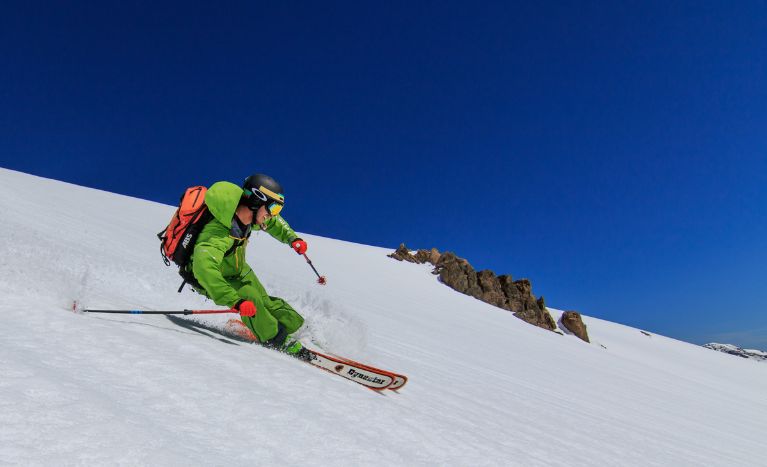

At the end of the month, the Christmas vacationers from Europe fill the nation. High Atlas mountain crossings are covered by snow, but skiers will benefit from the white cover.
Weather of Morocco in December is warm and occasionally rainy. But it also delivers a lot of sunshine that is great for hiking and city exploration.
If you’re traveling to Fes, where the average high temperature is 64°F you should pack some rather warm clothing.
The average daily temperature in the Atlas Mountains is 57°F, and there will probably be some showers.
Expect downpour in the north as well as moderate temperatures in the 50s in places like Tangier. Marrakech is warmer, with daytime highs of about 70 degrees. In the desert, you’ll need to stay warm after nightfall.
What to do – The Sahara desert is ideal and the best time to visit Morocco in December. December’s chilly weather is ideal for camel rides and lounging around a bonfire. As long as you’re aware that you’ll have limited daylight hours, it’s also an excellent time to go climbing or trekking in the mountains.
Key events – Tan Tan Moussem, Marrakech International Film Festival, and New Year’s Eve.
Bottomline
Morocco is a beautiful country that exists in both old and modern worlds. As such, planning your trip will require balancing many factors, including weather, seasons and which areas of the country you want to visit most. Choose wisely, and enjoy your journey to a land as ancient as time itself!

